#speedlight portrait
Explore tagged Tumblr posts
Text
Flash per Fotocamere NEEWER Z2-C (versione Canon): Potente e Versatile con Alcuni Punti da Migliorare
NEEWER Z2-C Flash Speedlite TTL 2.4G a Testa Rotonda per Canon, 2 Lampade Pilota a LED, Tasto TCM per Cambio Rapido TTL/M, 76W 1/8000s HSS Batteria al Litio 7.4V/2600mAh 480 Flash a Piena Potenza Se sei un appassionato di fotografia, saprai quanto sia importante avere un buon flash a disposizione per ottenere scatti di alta qualità in qualsiasi condizione di illuminazione. Recentemente ho avuto…
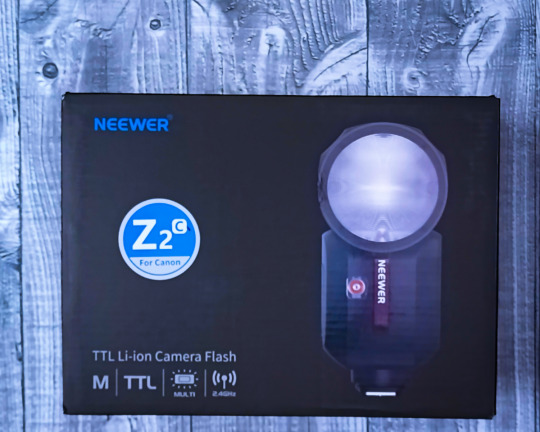
View On WordPress
#Canon 85mm f1.8#Canon R6#flash photography#flash photography basics#flash photography for beginners#flash photography outdoor#flash photography settings#flash photography tips#flash photography tutorial#neewer strobe#neewer z2#Neewer Z2 flash#neewer z2-c"#photoshoot#photoshoot pose#portrait photo#portrait photography#portrait photography lighting#speedlight portrait#trigger qpro c#Z2
0 notes
Photo
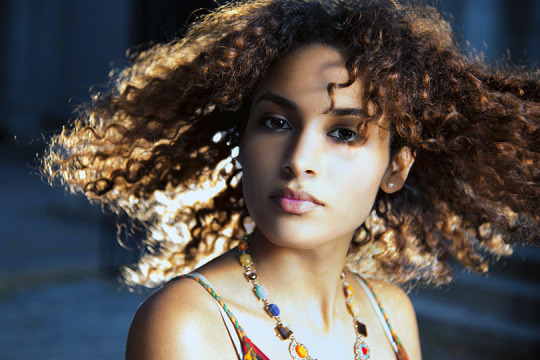
Miliani
#miliani#model#portrait#outdoors#hair flip#speedlights#nikon#d800#rim light#warm and cold#still#motion#portrait photography#photographers on tumblr#original photographers
8 notes
·
View notes
Text
UPDATE: 5 albums in day is coming
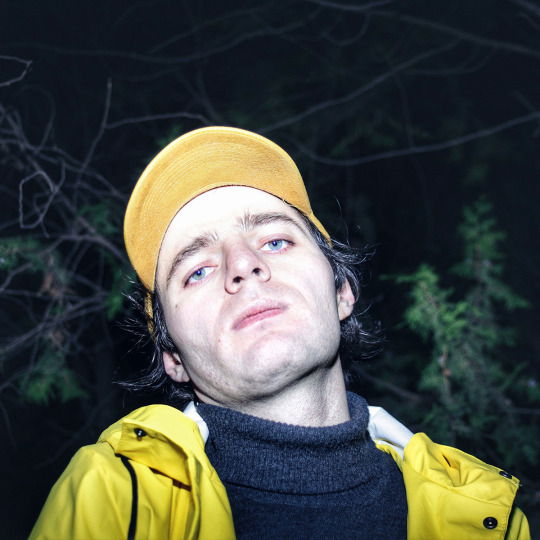
I'm endeavouring to perceive an exact photo for the album's frontal cover. That shoot is amiss and haywire, general mood is wrong. It lacks sincerity, corporeality and true substantiality. The photo session process includes choosing the location for the photo, determining the colour tone, conveying the general mood and getting the right angle, which is based on the overall music feeling. VAQO MUSIC has already decided that the photo should be a selfie.
I borrowed a speedlight to get concentrated lights on the subject. I found a special place in the poorly lit and pitch-black forest. However, there is not enough depth in the face's mood yet. Eyes are too blue and skin too pale. The goal is to create a solo portrait and find the optimal aperture, which exists in the range f/2 – f/2.8. Still, we may need to bump it slightly up or down depending on the darkness, light conditions and particular lens. For best results at night, I should keep myself as a subject less than 2 meters away from the pointed camera. (for instance, in full-body portraits). Experiment with f/4 – f/5.6 and ISO 200/600 maybe.
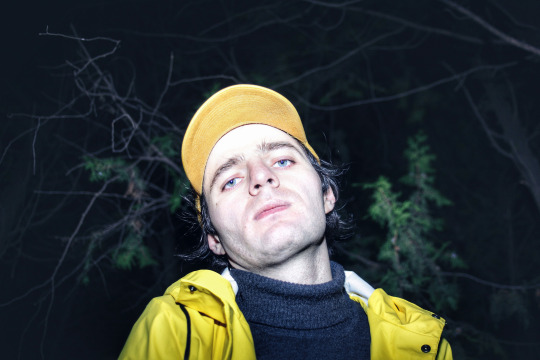
The hero of the upcoming bedroom pop style album is a deeply emotional person who does not express emotions anymore, feeling left out and isolated. He hates being portrayed as miserable and helpless to be understood and accepted. That's why he isolated himself from the filth that is modern Tbilisi, Georgia, and the people around the world. A forlorn young fella, a Hero to succeed. He waited in the forlorn hope that someone, she would one day come back. He is deeply hurt by life experience, thoughts are filled with hatred. Before that, suffered from severe generalized anxiety disorder and heavy obsessive-compulsive disorder, Bummer in life no longer had any effect on him, he was so used to disasters, tragedies, cataclysms, and catastrophes. Although a person has a public disdain for humanity. He doesn't care much about any war in the world, any human sickness, who will die and who will survive, for him everything died a long time ago. Tbilisi is tormented, poor hell because of biologically minded people, mentally death is the way to go to in better place and sleep from away... from humans and animals... from noise.
2 notes
·
View notes
Text
I started the year in Japan and finishing the year in California. I was able to transform my hobby into a side gig. In the second half of 2023, I started shooting officially. Indies, major promotions, joshi, deathmatch, you name it — I did it.
Thank you to all the promotions that took a chance on me this year. I have gained experience and learned so much in 2023. Here are some “new to everyone else” photos that haven’t been posted.
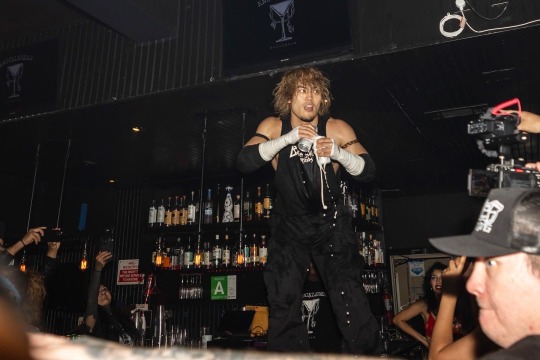
For those of you that are interested in pursuing pro wrestling photography, here are the things I wish people told me:
1. Invest in more expensive camera lenses. You can upgrade your body, but the lenses are going to stick with you for a minimum of a decade. Make sure they have low aperture to maximize potential for photos.
2. Learn to shoot from your seat and shoot it well. Fast shutter (my minimum is around 1/800), lowest ISO possible (I try not to go past ISO 7500), and low aperture (f/2.8 or higher if you have more subjects).
3. If you are shooting from your seat, respect the assigned videographers, photographers, and crew. I have worked shows where I’ve had interference in my shots. Probably the worst was when a guest told me to fuck off. That’s the type of behavior that will get you kicked out of a show.
4. Find a workflow that works the best for you. I use an iPad Pro with an Apple Pencil for my mass edits in Lightroom.
Made it to ringside? Here’s some additional tips:
5. Invest in a speedlight and learn what the settings mean. Even if you don’t shoot with one at ringside, keep one around for fast portraits on the fly or if the lighting is awful in a venue.
6. Ask the promoter what they want. You can enjoy the show still, but remember you are working.
7. It is a lot of cardio. Not for the faint of heart, wrestlers only are out for one match. Remember you are there for ALL OF THEM.
8. Knee pads. Your knees will thank you.
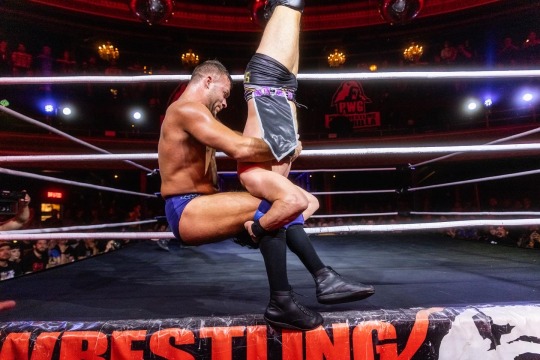
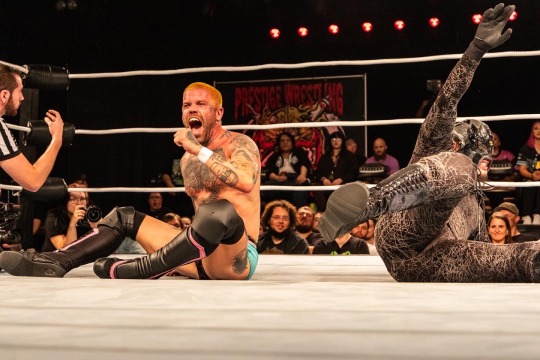
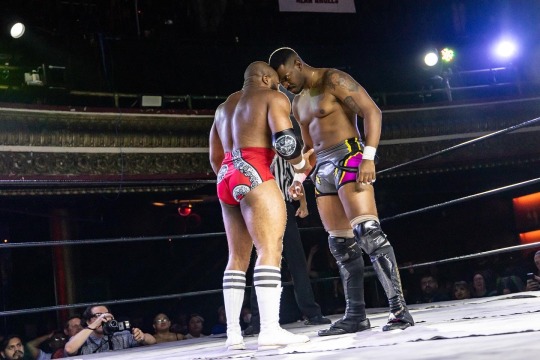
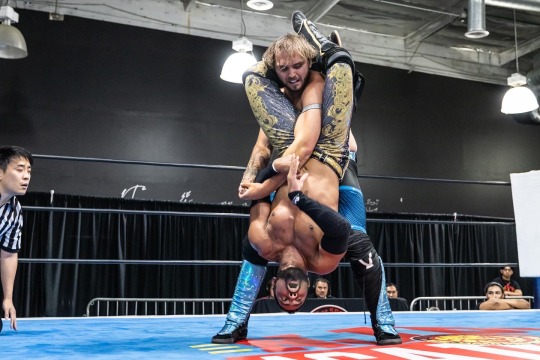
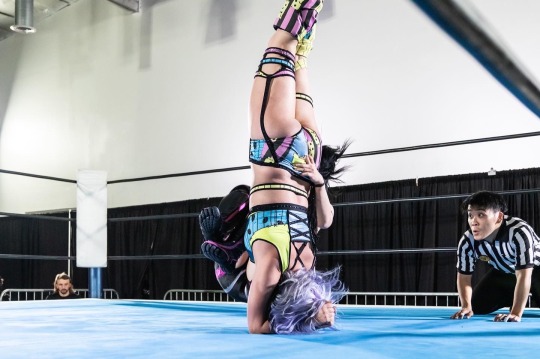
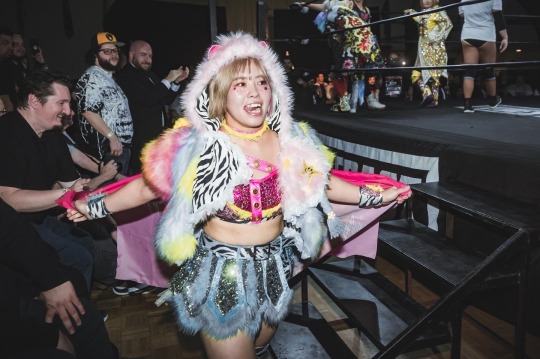
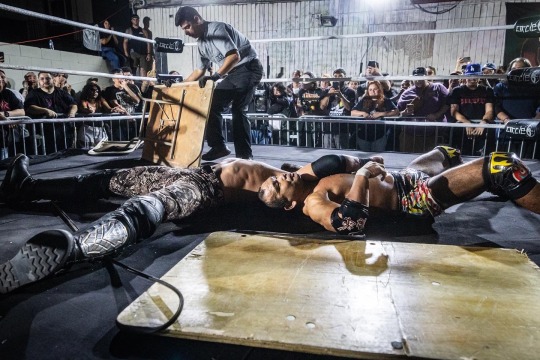
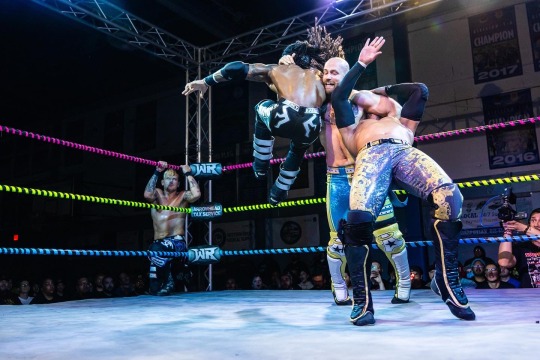
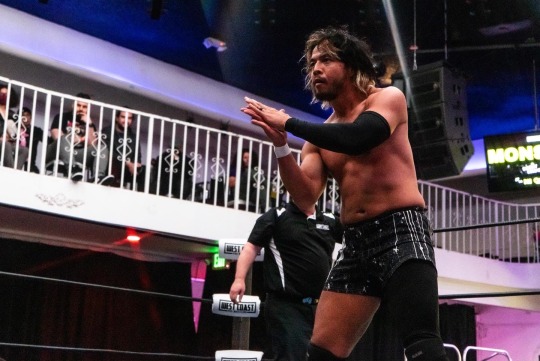
8 notes
·
View notes
Text
UPDATE: 5 albums in day
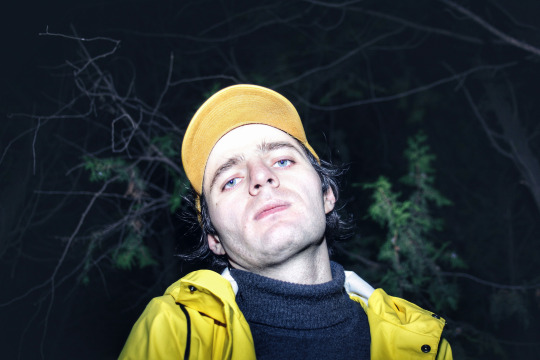
I'm endeavouring to perceive an exact photo for the album's frontal cover. That shoot is amiss and haywire, general mood is wrong. It lacks sincerity, corporeality and true substantiality. The photo session process includes choosing the location for the photo, determining the colour tone, conveying the general mood and getting the right angle, which is based on the overall music feeling. VAQO MUSIC has already decided that the photo should be a selfie.
I borrowed a speedlight to get concentrated lights on the subject. I found a special place in the poorly lit and pitch-black forest. However, there is not enough depth in the face's mood yet. Eyes are too blue and skin too pale. The goal is to create a solo portrait and find the optimal aperture, which exists in the range f/2 – f/2.8. Still, we may need to bump it slightly up or down depending on the darkness, light conditions and particular lens. For best results at night, I should keep myself as a subject less than 2 meters away from the pointed camera. (for instance, in full-body portraits). Experiment with f/4 – f/5.6 and ISO 200/600 maybe.
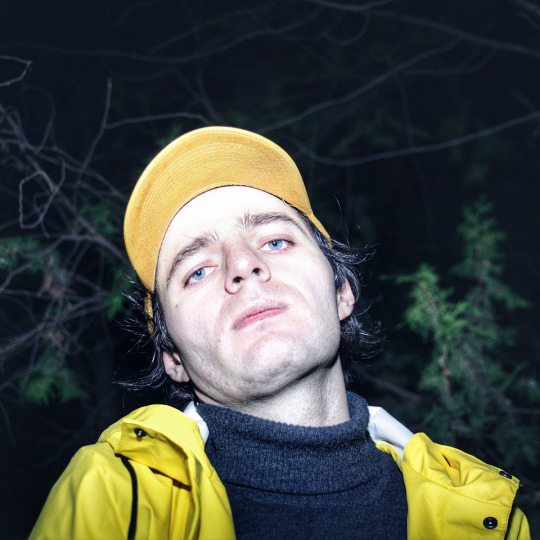
The hero of the upcoming bedroom pop style album is a deeply emotional person who does not express emotions anymore, feeling left out and isolated. He hates being portrayed as miserable and helpless to be understood and accepted. That's why he isolated himself from the filth that is modern Tbilisi, Georgia, and the people around the world. A forlorn young fella, a Hero to succeed, come true. He waited in the forlorn hope that someone would one day come back. He is deeply hurt by life experience, thoughts are filled with hatred. Before that, suffered from severe generalized anxiety disorder and heavy obsessive-compulsive disorder, Bummer in life no longer had any effect on him, he was so used to disasters, tragedies, cataclysms, and catastrophes. Although a person has a public disdain for humanity. He doesn't care much about any war in the world, any human sickness, who will die and who will survive, for him everything died a long time ago. Tbilisi is tormented, poor hell because of biologically minded people, mentally death is the way to go to in better place and sleep from away... from humans and animals... from noise.
0 notes
Text
Top Wedding Videographer Fort Lauderdale Tips to Capture Winter Weddings
Winter weddings are beautiful and give out a unique experience. Winters create an enchanting and elegant atmosphere for weddings. The crisp air blended with snow-clad landscapes gives out the perfect setting for a romantic wedding. it also tests the photography skills of the wedding videographer Fort Lauderdale. They should possess the essential skills and preparation techniques to capture the wedding videos and photos in snowy and low light conditions. Here are all the techniques and tips to follow to get the ideal photo and video results.
• In winters, you may not find the sunlight for a longer while. In fact, the days are very short. The winter weddings take place in the afternoon so that the light is dim, especially in case of indoor weddings. It is important that the wedding photographer makes use of the low light condition. They can use the wide aperture, which allows the light to hire the camera’s sensor. This is an important technique to capture quality pictures in low light. Similarly, it can be used to create beautiful pictures with a shallow depth of field, which ensures that the subjects stand out from their background. You can also increase the ISO sensitivity settings to 800 or 1600. This would increase the light in the surroundings without adding noise. Wedding photographer Fort Lauderdale should avoid using a very high ISO that can result in grainy pictures. While a slow shutter speed is a good idea, you should avoid the motion blur. The shutter speed should be 1/60 or slower for portraits. You can use a faster shutter speed for moving objects. Lastly use a lens with stabilization that can help you shoot in low light and slower shutter speed.
• You should use the natural snowlight to your advantage when clicking the pictures. It can make the backdrop seem magical and ethereal. With snow, you can get the light to reflect and illuminate the space without causing any shadows. You can use the snow to your benefit as the wedding videographer Fort Lauderdale by implementing it as a reflector. The natural reflector can help position the subjects in the snowy areas. The light that boundes from the subjects can help remove the shadows while offering best results in the outdoor shoots. You should take note of the exposure challenges. The exposure can hamper the quality and beauty of the photographs. When you use snow as the backdrop there is a chance that the snow can underexpose the images if they are white. The camera might read it as bright. You can compensate this by increasing the exposure by +1 or +2 stopes. Lastly, adjust the white balance for snow to cloudy or other custom ones. This will increase the warmth in your photos. • You must ensure that you have plenty of indoor shots planned for the wedding. Owing to the cold temperature, a lot of people tend to use indoor spaces for their weddings as a wedding photographer Fort Lauderdale, you should be able to capture the warmth with the right shots. You can use artificial lighting like speedlights and soft boxes to supplement the light needs posed by you. You can use chandeliers and candles to add lighting to the space and click beautiful pictures.
0 notes
Text
Essential Photography Gear for Professionals
Photography is more than just capturing moments — it’s about creating art and expressing emotions through visuals. For professional photographers, having the right gear is crucial to achieve the desired results. Whether you are an aspiring photographer or an experienced professional looking to upgrade your kit, understanding the essential photography gear can make a significant difference in your work quality. Here, we’ll explore the must-have tools for professionals that ensure you’re always ready to capture the perfect shot.
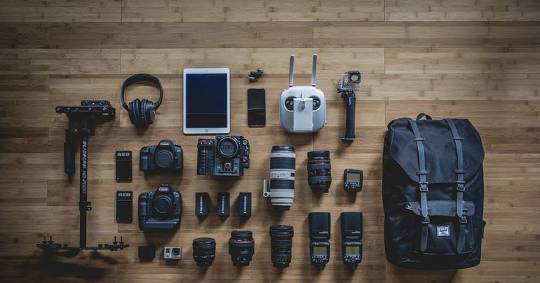
1. High-Quality Camera Body
Every professional photographer knows that the camera body is the foundation of their kit. When choosing a camera, it’s important to consider the type of photography you specialize in. For instance, Portrait photographer may prefer a full-frame DSLR or mirrorless camera due to their ability to produce shallow depth of field and excellent low-light performance. Meanwhile, wildlife and sports photographers might favor cameras with fast continuous shooting capabilities.
Some of the popular camera brands among the best photographers in New Delhi include Canon, Nikon, and Sony. These brands are known for their reliability, versatility, and wide range of lenses and accessories. Investing in a quality camera body is the first step towards creating stunning images.
2. Versatile Lenses
A camera is only as good as the lenses attached to it. Lenses allow photographers to manipulate the perspective and control the amount of light that reaches the camera sensor. Here are a few lens types that are indispensable for professionals:
Standard Zoom Lens (24–70mm): This is a great all-rounder lens that offers flexibility in framing and composition. It’s perfect for portraits, landscapes, and everyday shooting.
Prime Lens (50mm or 85mm): Known for their sharpness and ability to produce beautiful bokeh, prime lenses are a favorite among portrait photographers. The 50mm lens is often referred to as the “nifty fifty” due to its versatility and quality.
Telephoto Lens (70–200mm): This lens is ideal for capturing distant subjects, such as wildlife or sports, without losing details. It is also widely used in fashion shoots for creating compressed backgrounds.
Investing in high-quality lenses can significantly improve your images, making them sharp and detailed, and is a key part of any professional’s photography gear.
3. Sturdy Tripod
A tripod is essential for achieving stability, especially during long exposures, landscape photography, or time-lapse shots. When choosing a tripod, look for one that is lightweight yet sturdy. Carbon fiber tripods are highly recommended as they are durable and easy to carry.
For professionals who shoot videos or work in a studio, a fluid head tripod offers smooth panning and tilting, which is crucial for creating professional-grade videos. A good tripod ensures your camera stays steady and can greatly enhance the quality of your images, especially in low-light situations.
4. External Flash and Lighting Equipment
Lighting can make or break a photograph. While natural light is always preferred, it is not always available or controllable. Professional photographers rely on external flashes, speedlights, and continuous lighting setups to control the lighting in their shoots.
External Flash: An external flash is more powerful and flexible than the built-in camera flash. It allows you to bounce light off ceilings or walls to create softer shadows.
Studio Lighting: For studio-based professionals like product or portrait photographers, investing in softboxes, umbrellas, and LED lights can provide the consistent lighting needed for high-quality images.
Light Modifiers: Reflectors, diffusers, and colored gels can shape and color the light, giving photographers more creative control. This is particularly useful for the best photographer in New Delhi who need to adapt to different shooting environments and client needs.
5. Camera Bag
A well-designed camera bag is essential for protecting your gear and making transportation easier. Professional photographers need a bag that can hold their camera, multiple lenses, memory cards, batteries, and other accessories securely. When choosing a camera bag, look for features like padded compartments, waterproof material, and easy accessibility.
Backpack-style camera bags are great for traveling photographers, while messenger bags or roller bags might be preferred by those who work in studios or on local shoots. A good bag ensures that all your photography gear is safe and organized, whether you’re shooting in a bustling city or a remote landscape.
6. Memory Cards and External Storage
High-resolution photos and videos take up a lot of space, making memory cards an important part of a photographer’s toolkit. Look for memory cards with high read and write speeds to ensure smooth shooting, especially when capturing burst shots or 4K videos.
It’s also important to have external storage solutions, like SSD drives or portable hard drives, to back up your work. Losing precious images due to a memory card failure can be devastating, so having a reliable backup system is essential for every professional photographer.
7. Editing Software and a Reliable Computer
Once the shooting is done, the post-processing phase begins. Professional photographers often use software like Adobe Lightroom and Photoshop to refine their images. These tools offer powerful editing capabilities that can enhance color, adjust exposure, and remove unwanted elements from a photo.
Investing in a high-performance computer is equally important. It should have enough processing power, RAM, and graphics capability to handle large image files without lag. For those working in the competitive market of New Delhi, having efficient editing software and hardware can save time and produce better results.
8. Remote Shutter Release
A remote shutter release allows photographers to take photos without physically pressing the camera’s shutter button, which can be crucial for minimizing camera shake during long exposures or time-lapse photography. It’s a simple yet effective tool that can make a big difference in the sharpness of your photos.
9. Cleaning Kit
A clean lens and sensor are essential for capturing sharp images. Dust and smudges can ruin a perfectly composed shot. A basic cleaning kit should include a blower, microfiber cloth, lens cleaning solution, and sensor swabs. Keeping your gear clean not only ensures high-quality images but also extends the lifespan of your equipment.
Conclusion: Elevate Your Photography with the Right Gear
In the world of professional photography, having the right photography gear can set you apart from the rest. From a high-quality camera body and versatile lenses to essential accessories like tripods and lighting equipment, each piece of gear plays a critical role in creating stunning visuals. Aspiring to be the best photographer in New Delhi or anywhere else requires continuous learning, practice, and the right tools.
At Farazdak Studio, we understand the importance of quality equipment in capturing unforgettable moments. Whether you need a portrait shoot or a professional photoshoot, our team is equipped with the best gear to ensure top-notch results. Trust Farazdak Studio for all your photography needs, and let us bring your vision to life with precision and creativity.
By investing in the right gear and choosing a studio that values quality, you’re not just taking photos — you’re creating art.
Read More Blogs:
Common Photography Mistakes and How to Avoid Them
Best Candid Wedding Photographer in New Delhi
The Role of Natural Light in Outdoor Photography
How to Choose the Perfect Location for a Photoshoot
Originally published at https://farazdakstudio.blogspot.com on October 23, 2024.
#photography#photography gears#essential gears for photography#gears for photography#best photographer#best photographer in new delhi
0 notes
Text
Mastering the Art of Light: A Photographer’s Guide to Different Lighting Setups
Introduction
Light is the cornerstone of photography. It shapes the mood, atmosphere, and overall impact of an image. Understanding and effectively utilizing different lighting setups can elevate your photography. In this comprehensive guide, we’ll explore various lighting techniques and their applications in different genres of photography.
Natural Light
Natural light, often considered the most flattering and authentic, can be harnessed in various ways:
Golden Hour and Blue Hour: The periods shortly after sunrise and before sunset offer soft, warm light that’s ideal for portraits and landscapes.
Overcast Day: Diffused light from overcast skies creates a soft, even illumination that’s excellent for outdoor portraits and product photography.
Direct Sunlight: While it can create harsh shadows, direct sunlight can be used creatively to highlight textures and details. Consider using a diffuser or reflector to soften the light.
Artificial Light
Artificial lighting provides greater control and flexibility, allowing photographers to create specific moods and effects. Common types of artificial light include:
Continuous Light: LED lights and fluorescent lights offer a constant illumination that’s useful for video and live streaming.
Flash: Speedlights and studio strobes can produce intense bursts of light, allowing for precise control over exposure and shadow placement.
Mixed Light: Combining natural and artificial light can create interesting and dramatic effects.
Lighting Techniques
High-Key Lighting: This technique involves creating a bright, airy image with minimal shadows. It’s often used in fashion and beauty photography.
Low-Key Lighting: This technique creates a dark, mysterious atmosphere with dramatic shadows. It’s popular in noir and horror genres.
Rembrandt Lighting: Named after the Dutch painter, this technique involves creating a triangular-shaped highlight on the subject’s cheek.
Butterfly Lighting: This technique involves placing the light directly above the subject, creating a butterfly-shaped shadow under the nose.
Loop Lighting: This technique involves positioning the light at a 45-degree angle to the subject, creating a loop-shaped highlight on the opposite side of the face.
Lighting for Different Genres
Portrait Photography: Soft, diffused light is generally preferred for portraits. Consider using a reflector to fill in shadows and create a more flattering look.
Product Photography: Consistent lighting is essential for product photography. Use light tents or softboxes to create a clean, shadowless background.
Landscape Photography: Natural light is often the best choice for landscape photography. However, artificial light can be used to highlight specific elements or create dramatic effects.
Event Photography: A combination of natural and artificial light is often used for event photography. Be prepared to adjust your lighting setup based on the venue and time of day.
Automotive Photography: Strong, direct light can be used to highlight the curves and details of vehicles. Consider using a polarizing filter to reduce reflections.
Conclusion
Understanding and mastering different lighting techniques is essential for any photographer. By experimenting with various setups and lighting modifiers, you can create stunning images that capture the essence of your subject.
Are you looking for a professional photographer in Dubai to capture your business’s unique story? As a leading Dubai photography agency, we offer a wide range of services, including real estate, food, product, event, and automotive photography. Our team of experienced photographers is dedicated to delivering high-quality images that exceed your expectations. Contact us today to discuss your project and get a free quote.
#dubai#photography in dubai#camera tips#food photography#photography tips#camera setting#photos tips#Lighting tips for photos
0 notes
Text
The Ultimate Professional Photography Equipment List

In the world of photography, equipment plays a pivotal role in capturing the perfect shot. Whether you're a seasoned professional or an aspiring enthusiast, having the right gear can make all the difference in achieving stunning results. From cameras to lenses, lighting to accessories, the options can seem overwhelming. That's why we've compiled the ultimate professional photography equipment list to guide you through the essentials of what you need to take your photography to the next level.
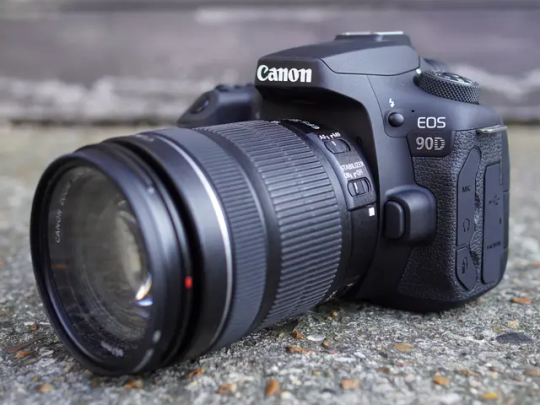
Cameras
DSLR Cameras Digital Single Lens Reflex cameras remain indispensable tools for professional photographers due to their versatility and exceptional image quality. They offer versatility, high image quality, and interchangeable lenses. Popular models include Canon EOS 5D Mark IV and Nikon D850.
Mirrorless Cameras: These compact and lightweight cameras offer similar image quality to DSLRs but without the bulky size. Sony Alpha series and Fujifilm X-T4 are renowned for their performance and portability.
Medium Format Cameras: Ideal for studio and landscape photography, medium format cameras like the Phase One XF IQ4 deliver exceptional detail and resolution, making them a favorite among commercial photographers.
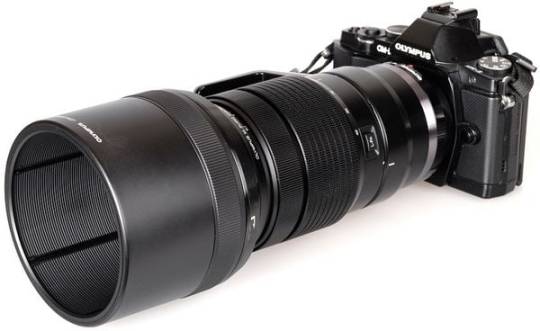
Lenses
Prime Lenses: Known for their sharpness and wide aperture, prime lenses like the Canon EF 50mm f/1.2L and Nikon AF-S NIKKOR 85mm f/1.4G are perfect for portraits, low-light situations, and achieving beautiful bokeh.
Zoom Lenses: Offering versatility, zoom lenses like the Canon EF 24-70mm f/2.8L II and Sony FE 70-200mm f/2.8 GM are great for capturing a variety of subjects, from landscapes to events, with minimal lens changes.
Macro Lenses: Designed for close-up photography, macro lenses such as the Nikon AF-S VR Micro-NIKKOR 105mm f/2.8G are essential for capturing intricate details and capturing stunning images of small subjects like flowers and insects.
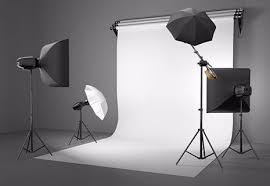
Lighting
Speedlights: Portable and versatile, speedlights like the Nikon SB-5000 and Canon Speedlite 600EX II-RT provide on-camera and off-camera lighting solutions for various shooting conditions.
Studio Strobes: For professional studio setups, studio strobes such as the Profoto D2 and Godox AD600Pro offer consistent and powerful lighting for studio portraits, product photography, and fashion shoots.
Modifiers: Light modifiers like softboxes, umbrellas, and reflectors help control and shape light to achieve desired lighting effects, such as softening shadows or creating dramatic highlights.
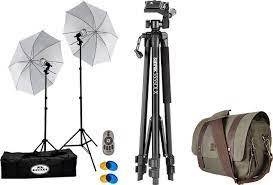
Accessories
Tripods: Essential for achieving stability and sharpness, tripods such as the Manfrotto MT055XPRO3 and Vanguard Alta Pro 263AB provide a sturdy base for long exposures, landscape photography, and self-portraits.
Camera Bags: Protect your gear while on the go with durable and functional camera bags like the Peak Design Everyday Backpack and Lowepro ProTactic series, featuring customizable compartments and weather-resistant materials.
Memory Cards: Invest in high-speed and reliable memory cards like SanDisk Extreme Pro and Lexar Professional to ensure fast write speeds and ample storage for high-resolution images and 4K video recording.
Filters: Enhance your photography with filters such as polarizers, ND filters, and graduated neutral density filters to control reflections, reduce glare, and balance exposure in challenging lighting conditions.
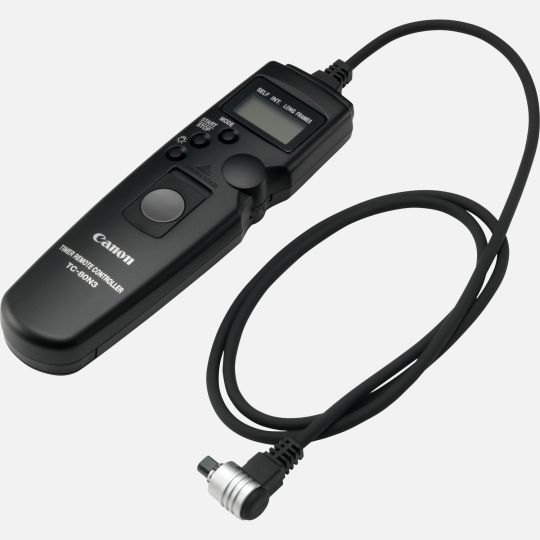
Post-Processing Tools
Editing Software: Adobe Photoshop and Lightroom are industry-standard software for editing and retouching images, offering powerful tools for adjusting exposure, color, and composition.
Calibration Tools: Ensure accurate colors and tones with monitor calibration tools like Datacolor SpyderX and X-Rite ColorMunki, essential for maintaining consistency across different devices and print outputs.
Storage Solutions: Back up and organize your digital assets with reliable storage solutions such as external hard drives, NAS (Network Attached Storage), and cloud storage services like Dropbox and Google Drive.
Conclusion
Building a comprehensive photography kit involves careful consideration of your artistic vision, shooting style, and budget. While the options may seem endless, investing in quality equipment that suits your needs can significantly enhance your photography experience and the quality of your work. Whether you're capturing breathtaking landscapes, timeless portraits, or compelling commercial imagery, having the right tools at your disposal is essential for achieving your creative vision. So, equip yourself with the essentials from our professional photography equipment list and embark on a journey of endless possibilities in the world of photography.
0 notes
Text
Choosing the Right Flashgun for Your Photography Needs in the UK
A flashgun, also known as an external flash or speedlight, is an essential tool for photographers looking to enhance their lighting capabilities. In the UK, where weather conditions can be unpredictable, having a reliable Flashgun UK is crucial for achieving well-lit and professional-looking photographs.
When selecting a flashgun in the UK, there are several factors to consider. First and foremost is compatibility with your camera. Ensure that the flashgun you choose is compatible with your camera model to guarantee seamless integration and optimal performance.
Another vital consideration is power and range. Different flashguns come with varying power levels and coverage distances. For outdoor photography in the UK's diverse landscapes, a flashgun with a higher power output and an extended range can be beneficial. This is especially important when dealing with challenging lighting conditions or shooting subjects at a distance.
Additionally, the versatility of the UK Camera Club flashgun is a key aspect to examine. Look for features such as adjustable angles, zoom capabilities, and the ability to use diffusers and modifiers. These features allow for creative control over the lighting, enabling photographers to adapt to different shooting scenarios.
For those venturing into portrait photography, a flashgun with a tilting and swiveling head can be advantageous. This flexibility allows for bounce flash, which softens harsh shadows and produces more flattering portraits. This is particularly useful in the UK where overcast skies can create diffuse lighting conditions.
Consider the flashgun's ease of use and intuitive controls, especially for photographers just starting. A user-friendly interface and straightforward controls can make a significant difference in capturing the perfect shot without the hassle of navigating complex settings.
Conclusion:
In conclusion, selecting the right Flashgun UK involves considering factors such as compatibility, power, versatility, and ease of use. A well-chosen flashgun can elevate your photography, providing consistent and reliable lighting in a variety of conditions. Whether you're capturing landscapes, portraits, or events, investing in a quality flashgun tailored to your needs will undoubtedly enhance your photographic endeavors in the UK's dynamic and ever-changing environment.
0 notes
Text
The Art of Speedlight Photography: Tips for Stunning Results
Speedlights are compact and versatile lighting tools that can elevate your photography to new heights. Whether you're a beginner or an experienced photographer, mastering the art of speedlight photography can significantly enhance the quality and creativity of your images. In this guide, we will explore essential tips and techniques that will help you capture stunning results using speedlights. From understanding the fundamentals to advanced setups, you'll discover the art of harnessing the power of speedlights for impressive photographs.
Understanding Speedlights:
What is a speedlight and how does it differ from built-in camera flash?
Benefits of using speedlights for photography.
Key features and controls of a speedlight unit.
Off-Camera Flash Techniques:
Advantages of using off-camera flash with speedlights.
Wireless triggering options and remote control systems.
Positioning and angling the speedlight for desired lighting effects.
Experimenting with different lighting ratios and setups.
Bouncing and Diffusing Light:
Using bounce flash to soften and diffuse harsh light.
Utilizing reflective surfaces for bouncing light.
Dedicated bounce devices and modifiers for controlled lighting.
DIY alternatives for bounce and diffusion techniques.
Fill Flash and Balancing Ambient Light:
Enhancing natural light with fill flash to reduce shadows and add dimension.
Techniques for balancing flash and ambient light for natural-looking results.
Using flash exposure compensation to adjust flash intensity.
Controlling flash output for different lighting conditions.
Creative Lighting Techniques:
Creating dramatic portraits with dramatic lighting setups.
Light painting and long exposure techniques with speedlights.
Freezing motion with speedlights to capture action shots.
Silhouettes and backlit effects using speedlights.
Modifying Light with Accessories:
Exploring light modifiers for speedlights, such as softboxes and umbrellas.
Snoots, grids, and gels for creative and controlled lighting effects.
Using diffusers and reflectors to shape and enhance light.
Portable light stands and brackets for versatile positioning.
Mastering Flash Sync:
Understanding flash sync modes and their implications.
Syncing speedlights with the camera's shutter speed.
High-Speed Sync (HSS) for overcoming sync limitations and using wider apertures.
Rear curtain sync for creative motion blur effects.
Experimentation and Practice:
The importance of experimentation in speedlight photography.
Practicing with different subjects, scenes, and lighting setups.
Analyzing and learning from the work of experienced photographers.
Developing your own style and pushing creative boundaries.
Post-Processing and Retouching:
Fine-tuning exposure, color balance, and contrast in post-processing.
Addressing common issues like shadows, highlights, and color cast.
Enhancing details and retouching specific areas illuminated by speedlights.
Preserving a natural look while adding a touch of polish.
Conclusion: Mastering the art of Speedlight For Canon Rt in PRO tog opens up a world of creative possibilities in your photographic journey. By understanding the fundamentals, experimenting with different techniques, and pushing the boundaries of creativity, you can capture stunning results using speedlights. Remember to practice, learn from experienced photographers, and develop your own unique style. With the knowledge gained from this guide, you'll be equipped to take your photography to new heights and create impressive images that leave a lasting impact.
1 note
·
View note
Text
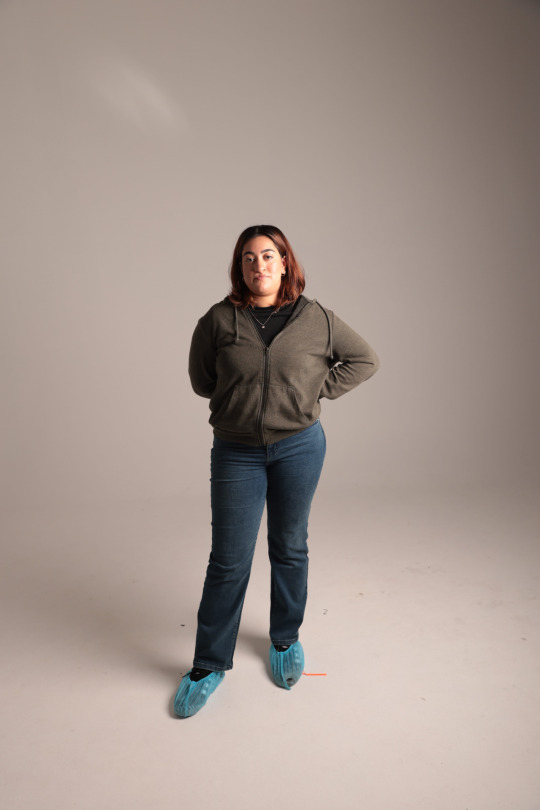
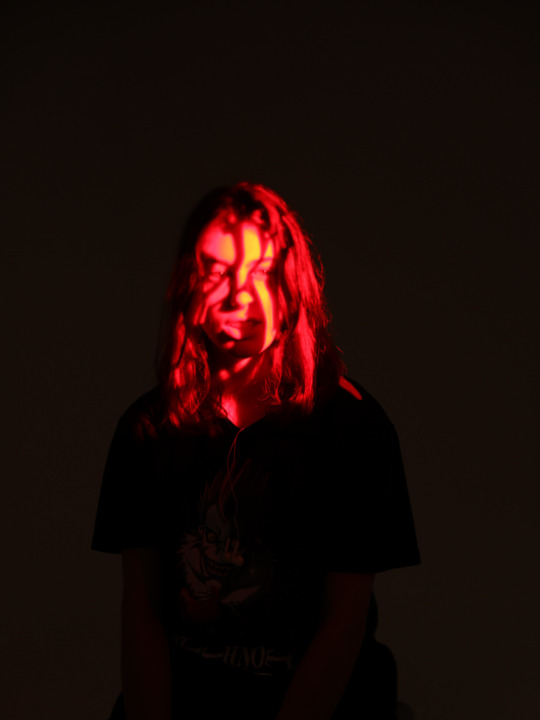
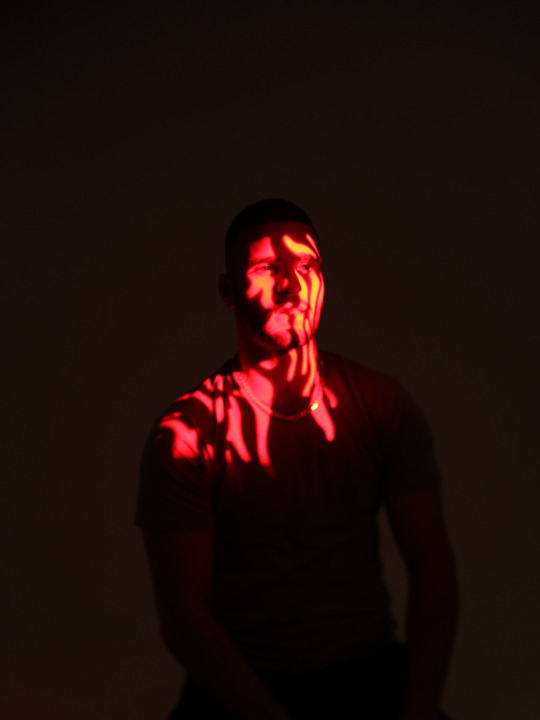
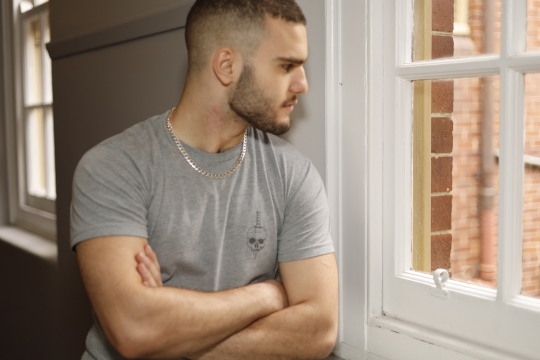
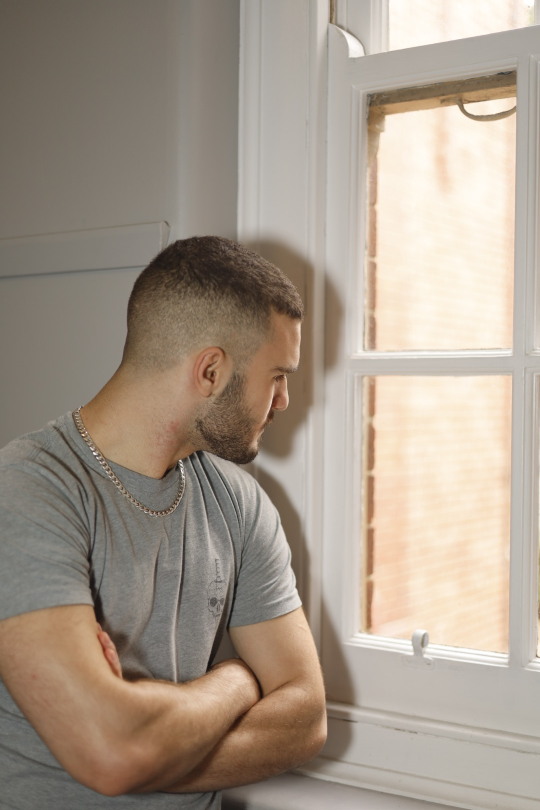
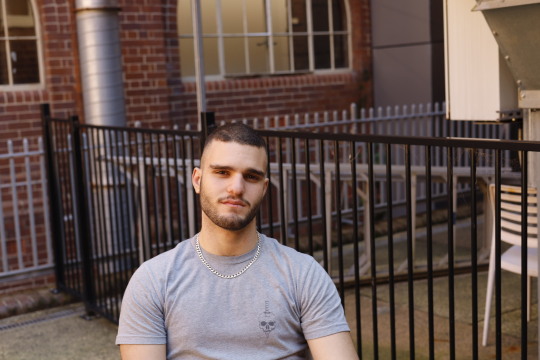
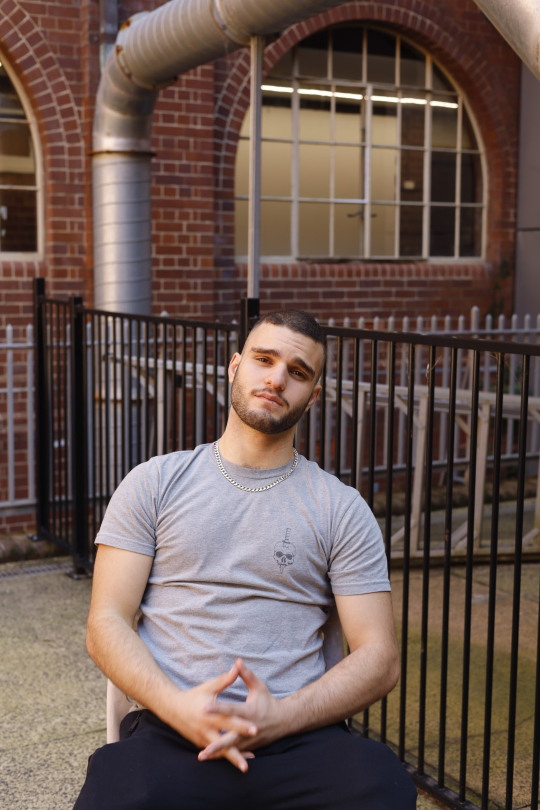
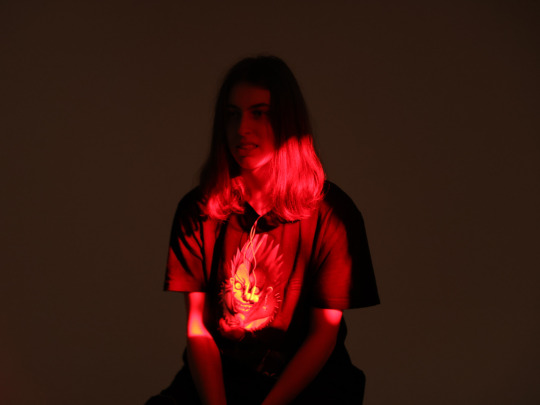
Using different Portrait Lighting styles. Includes:
-Hard light in studio
-Soft Light in studio
-Portable lighting kit on location
-Speedlight portrait
0 notes
Text
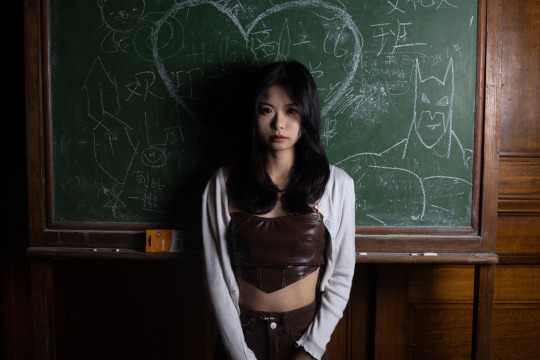

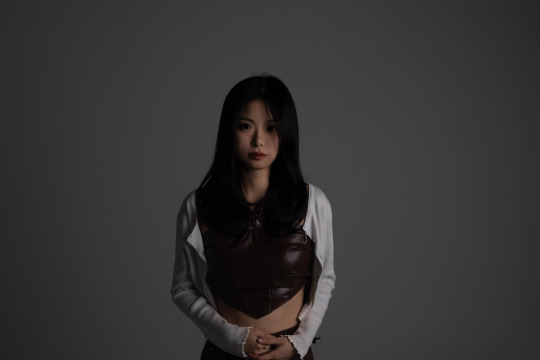
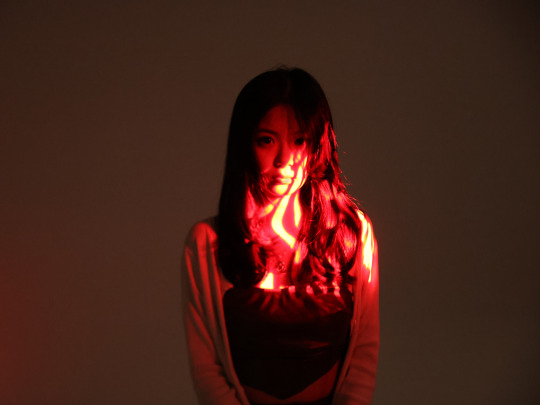
WEEK9 Weekly Framework
Group members: Yulin NIU & Jiarui Wang & Yilin Zhuang & Jiarui Wang & Siena Leng
Location: OTC
4 pics
hard light in the studio
soft light in the studio
portable lighting kit on location
speedlight portrait
By experimenting with different ways of lighting, the various states of being represented in the portrait.
0 notes
Text

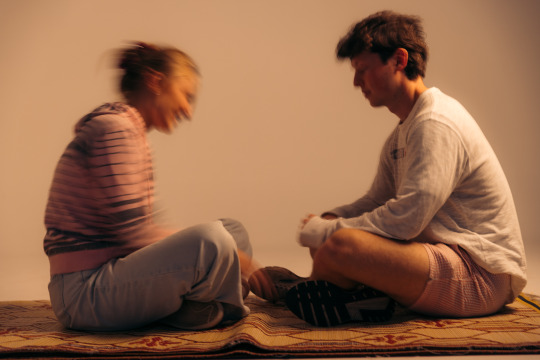
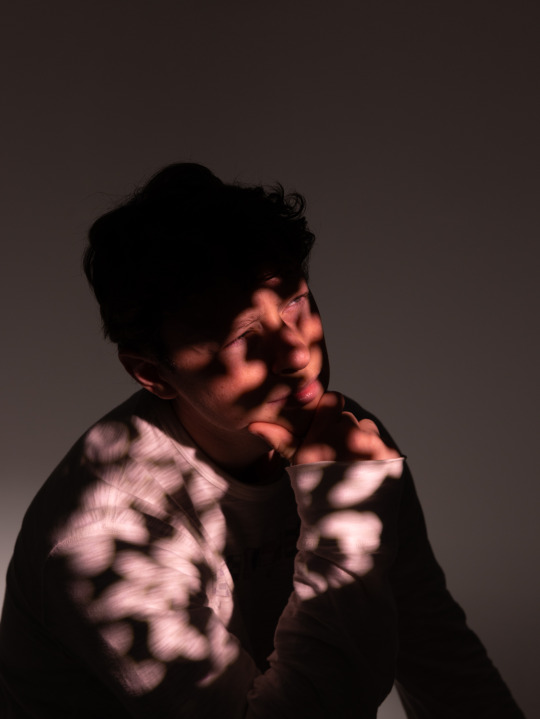
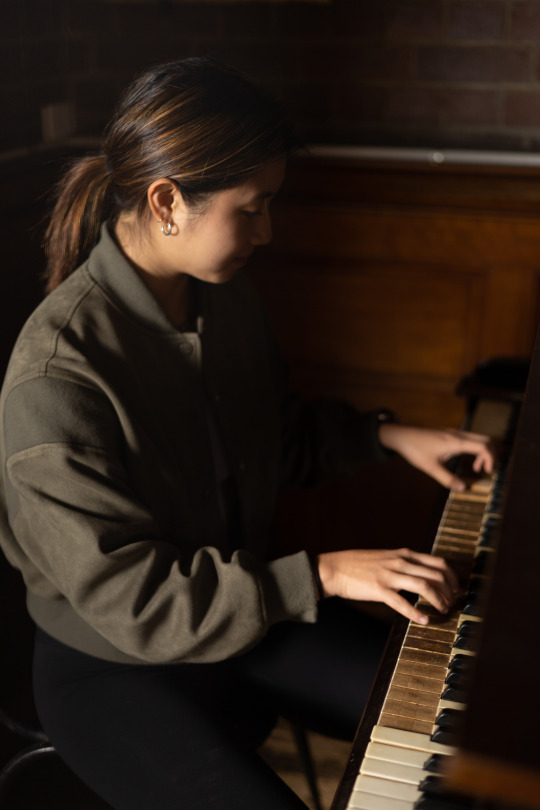
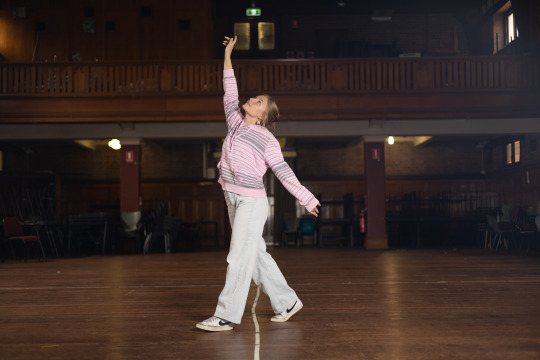
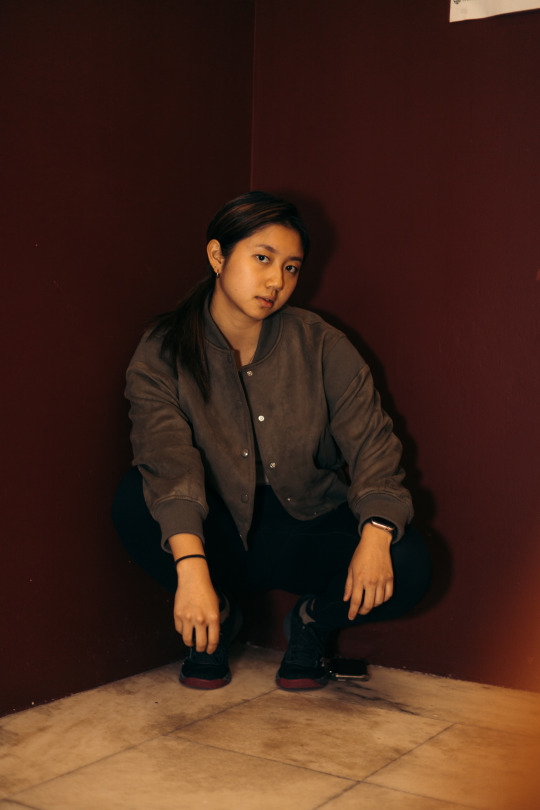
Portrait lighting styles
hard light in studio
soft light in studio
portable lighting kit on location
speedlight portrait on location
1 note
·
View note
Text
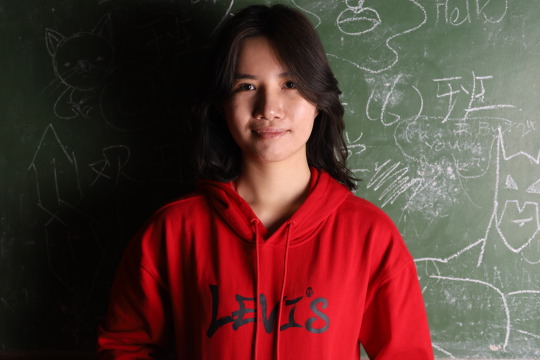


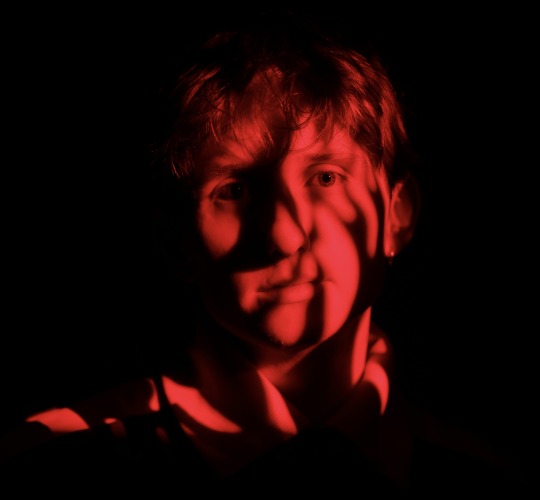
WEEK9 Weekly Framework
Group members: Wenrui Gu, Ziyuan Wang, Muir Mclennan
Background: OTC
4 pics
hard light in the studio
soft light in the studio
portable lighting kit on location
speedlight portrait
1 note
·
View note
Text
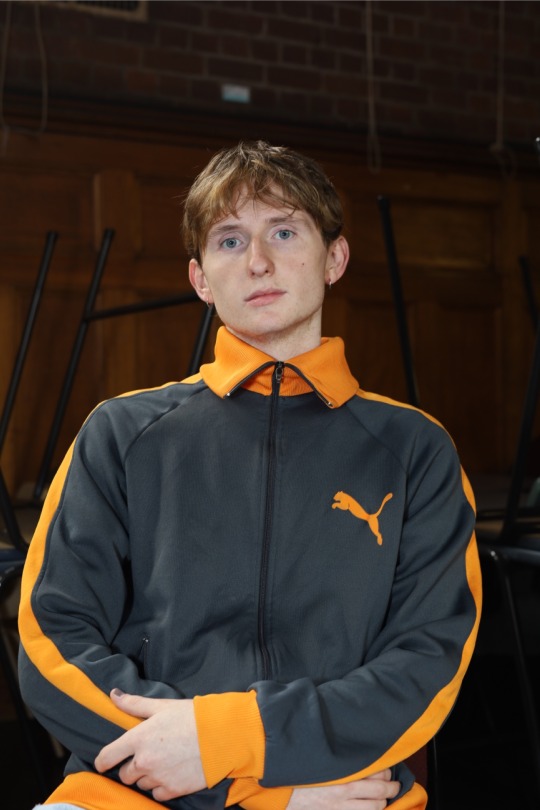
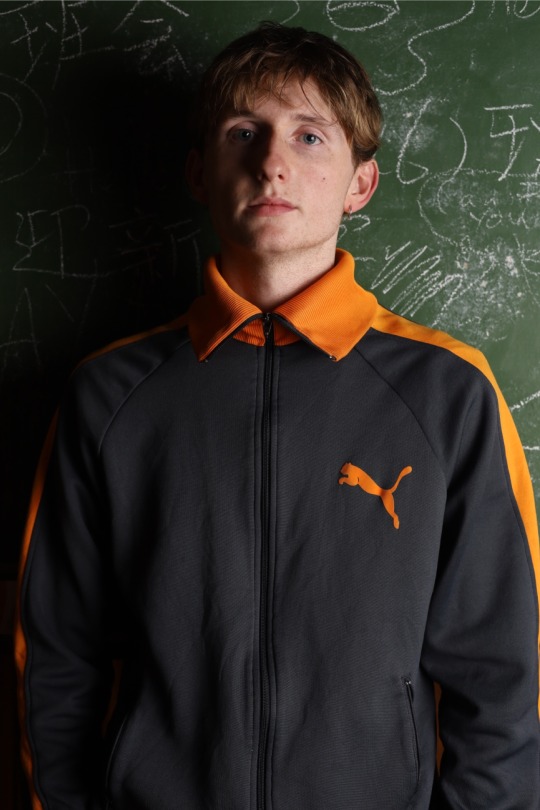
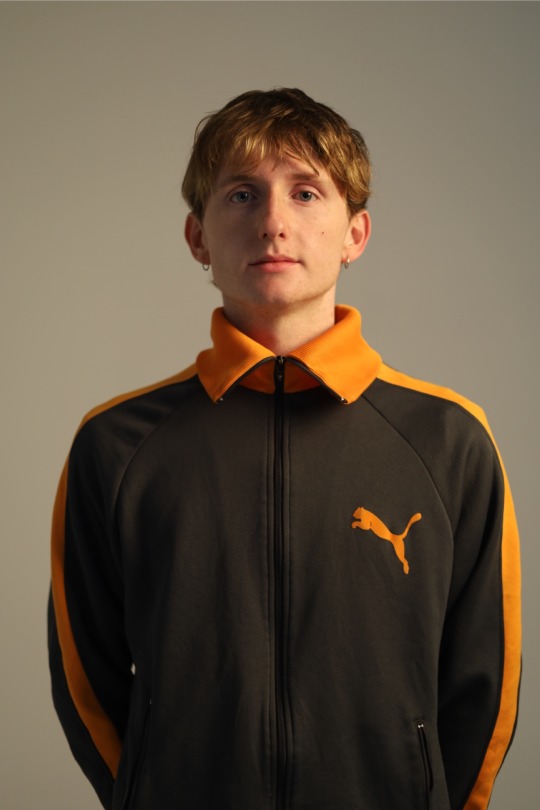
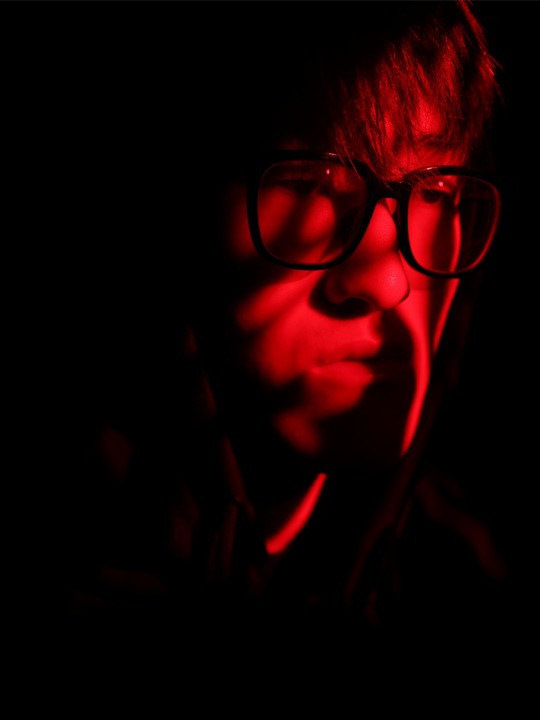
CAEL2085 wk9 Portrait lighting styles
portable lighting kit on location
speedlight portrait
soft light in studio
hard light in studio
0 notes